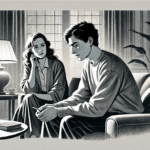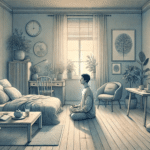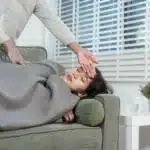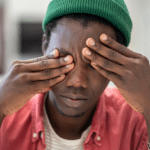Key Takeaways
- The seven main types of anxiety disorders are Generalized Anxiety Disorder (GAD), Panic Disorder, Social Anxiety Disorder, Specific Phobias, Separation Anxiety Disorder, Agoraphobia, and Selective Mutism.
- Symptoms range from constant worry and fear to physical signs like sweating and a racing heart.
- Treatment typically involves a combination of evidence-based therapies like CBT, DBT, and mindfulness practices – sometimes complemented by medication management.
- A Mission for Michael (AMFM) offers comprehensive anxiety treatment plans in serene, home-like facilities across California, Virginia, and Washington.
Quick Guide to Anxiety Disorders
Anxiety disorders are the most common mental health condition in the U.S., affecting 19.1% of the population, followed by major depressive episodes at 8.3%. While it’s normal to feel anxious occasionally, these disorders cause persistent and overwhelming anxiety (that’s disproportionate to the situation at hand) that interferes with daily life.
Common Signs and Symptoms
Identifying the symptoms of anxiety disorders is the first step in seeking help. These symptoms can vary widely but often include both physical and emotional components.
Physical symptoms might include:
- Rapid heartbeat
- Shortness of breath
- Muscle tension
- Fatigue
- Gastrointestinal issues, such as stomachaches or nausea.
Emotionally, individuals might experience:
- Intense fear or worry
- Restlessness
- Irritability
- Difficulty concentrating
Behaviorally, individuals might avoid situations that trigger their anxiety or develop compulsive behaviors, such as excessive cleaning or checking.
Impact on Daily Life
Anxiety disorders can significantly impact daily life in the following ways:
- Strained relationships with family and friends
- Avoidance of social gatherings or events

Decreased productivity at work or school is another impact of anxiety.
Founded in 2010, A Mission For Michael (AMFM) offers specialized mental health care across California, Minnesota, and Virginia. Our accredited facilities provide residential and outpatient programs, utilizing evidence-based therapies such as CBT, DBT, and EMDR.
Our dedicated team of licensed professionals ensures every client receives the best care possible, supported by accreditation from The Joint Commission. We are committed to safety and personalized treatment plans.
7 Main Types of Anxiety Disorders
There are more than 10 types of anxiety disorders, each with its specific symptoms and treatment approaches. But for now, we’ll learn the seven main types in detail.
a. Generalized Anxiety Disorder (GAD)
- Characterized by chronic anxiety, exaggerated worry, and tension.
- Often accompanied by physical symptoms such as headaches and muscle tension.
- Unlike other anxiety disorders, GAD is not triggered by a specific situation or object.
Individuals with GAD find it difficult to control their worry, which can interfere with their daily activities and relationships. For example, a person who constantly worries about everyday issues like health, finances, or work, even when there’s no apparent reason for concern. This can lead to sleep disturbances and difficulty concentrating.
Treatment usually involves cognitive-behavioral therapy (CBT) and medication.
b. Panic Disorder
- Involves recurrent, unexpected panic attacks.
- Symptoms include palpitations, chest pain, and a feeling of losing control.
- Panic attacks can occur suddenly and without warning – which can be terrifying.
Panic disorder can significantly affect one’s life, leading to avoidance of situations where panic attacks have occurred. Treatment often includes therapy and medication to manage symptoms and reduce the frequency of attacks.
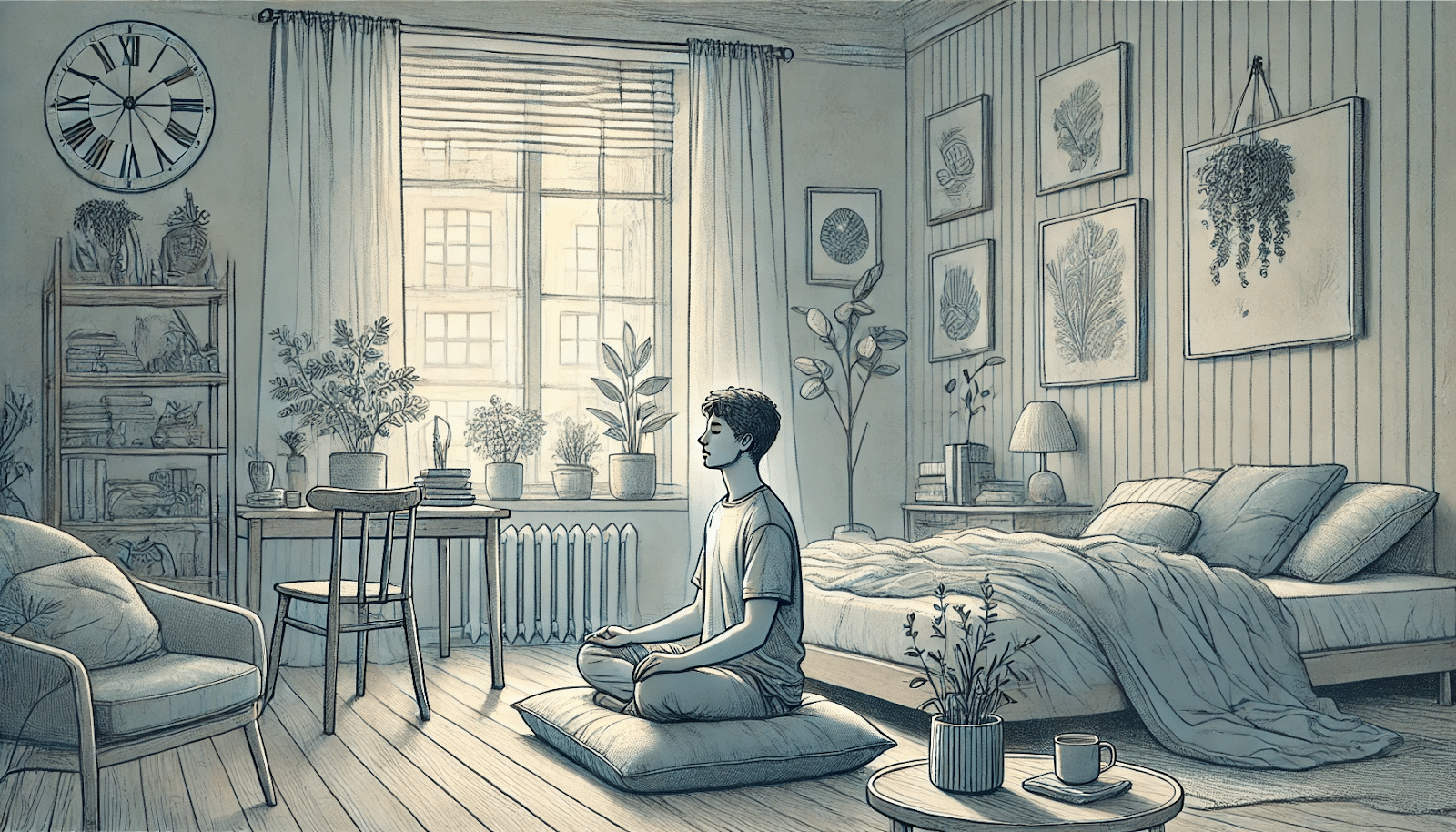
There are also 5-4-3-2-1 and 3-3-3 grounding techniques that can be used to properly manage panic attacks.
c. Social Anxiety Disorder (Social Phobia)
- Social anxiety disorder is also known as social phobia which involves an intense fear of social situations.
- Individuals with this disorder worry about being judged or embarrassed in front of others.
- People living with SAD usually avoid social interactions, affecting personal and professional relationships.
Treatment for social anxiety disorder often involves exposure therapy, where individuals gradually face social situations, and cognitive-behavioral therapy to change negative thought patterns.
d. Specific Phobias
- Specific phobias are characterized by an intense, irrational fear of a specific object or situation.
- Common phobias are:
- Arachnophobia: A fear of spiders and other arachnids.
- Aerophobia: A fear of flying.
- Acrophobia: Also known as hypsophobia, it’s a fear of heights.
Individuals with specific phobias often go to great lengths to avoid the feared object or situation, which can limit their activities and reduce their quality of life.
Treatment for specific phobias typically involves exposure therapy, where individuals are gradually and systematically exposed to the feared object or situation in a controlled manner. This helps to desensitize them over time.
e. Separation Anxiety Disorder (SAD)
- This disorder is characterized by excessive fear or anxiety about separating from an attachment figure.
- While separation anxiety is normal for children between 18 months and 3 years old, SAD is diagnosed if symptoms persist for:
- at least 4 weeks in children and adolescents
- 6 months or more in adults
- People with SAD may be reluctant to leave home, go to work or school, and may even be worried that something might happen to their attachment figure.
Since this type of anxiety is unusual or inappropriate for the person’s developmental age, comprehensive treatment is important to allow those affected to have a better life. That’s why SAD is usually treated with a combination of family therapy, CBT, and even medication.
f. Agoraphobia
- Agoraphobia is a fear of being alone in a situation or place where escape might be difficult.
- It may also include the fear of open spaces and crowded areas.
- People with agoraphobia may even be afraid of being outside the home alone, standing in line, or using public transportation.
Agoraphobia can vary in severity – some may not leave their house while others can only travel a short distance.
Treatment for this mental health condition involves a combination of psychotherapy (e.g., CBT, desensitization therapy) and medication. Support groups and mindfulness techniques can also help to manage the triggers and symptoms of agoraphobia.
g. Selective Mutism
- Selective mutism is an intense fear of talking in certain situations.
- People with selective mutism may be unable to speak in some social situations (e.g., at school), but they may speak freely at home.
- The primary symptom is the inability to speak in certain social situations for more than 4 weeks.
Those affected might have frozen facial expressions, display sudden stillness, avoid eye contact, and appear nervous, uneasy, or socially awkward. Some children with this condition may use verbal and non-verbal cues (e.g., grunting, writing) to communicate with others.
Treatment for selective mutism is usually CBT, and involving the family and school to introduce situations that encourage them to speak up gradually.
Your Path to Managing Anxiety: A Personalized Approach at AMFM
At A Mission for Michael (AMFM), we understand that each anxiety disorder presents its own unique challenges, regardless if you’re dealing with panic disorder, specific phobias, GAD, social anxiety, or other forms of anxiety.
We believe in a holistic approach that combines evidence-based therapies with personalized support. Our certified and experienced clinicians use proven treatments like CBT, DBT, and mindfulness practices, while also incorporating lifestyle changes and, when appropriate, medication management.
Through our various programs – from residential care to outpatient services – we provide the level of support you need to effectively manage your anxiety symptoms.

Our treatment centers across California, Virginia, and Washington offer comprehensive and compassionate care adjusted to your specific needs. We’ll administer your treatment plans in a home-like setting so that you can focus on getting better.
Ready to take the first step toward understanding and managing your anxiety? Contact us at 866-478-4383 for a free, confidential assessment.
Frequently Asked Questions (FAQ)
What triggers anxiety disorders?
Anxiety disorders can be triggered by various factors, including genetics, brain chemistry, and life experiences. Stressful or traumatic events, such as a loss or accident, can also contribute to the development of anxiety disorders.
How are anxiety disorders diagnosed?
Diagnosing anxiety disorders starts with a comprehensive evaluation by a mental health professional. This includes a physical exam, psychological assessment, and a discussion of your symptoms and medical history. The professional may use standardized questionnaires to help determine the type and severity of the disorder.
Can anxiety disorders be cured?
While anxiety disorders may not be “cured” in the traditional sense, they can be effectively managed with treatment. Many people experience significant improvement in their symptoms through therapy, medication, and lifestyle changes.
What treatment programs does AMFM offer for anxiety disorders?
A Mission for Michael (AMFM) has a range of anxiety treatment programs including residential treatment, partial hospitalization (PHP), intensive outpatient (IOP), and traditional outpatient services. They’re all personalized to individual needs and incorporate evidence-based therapies.







